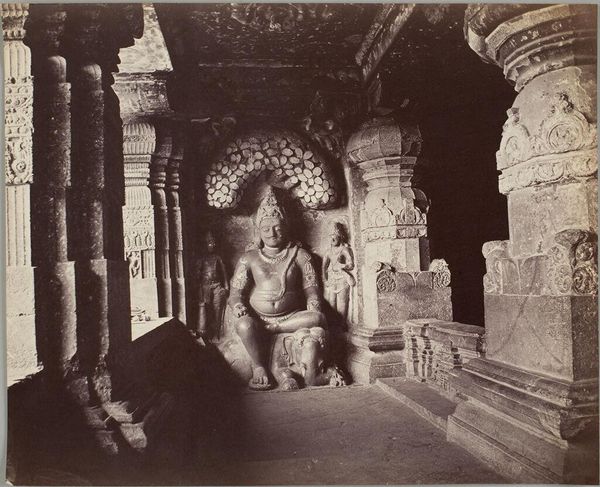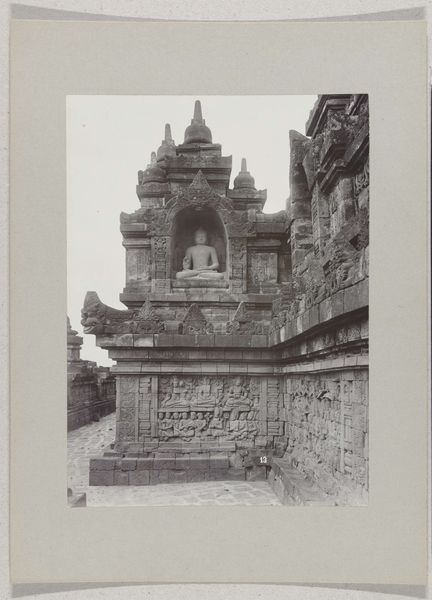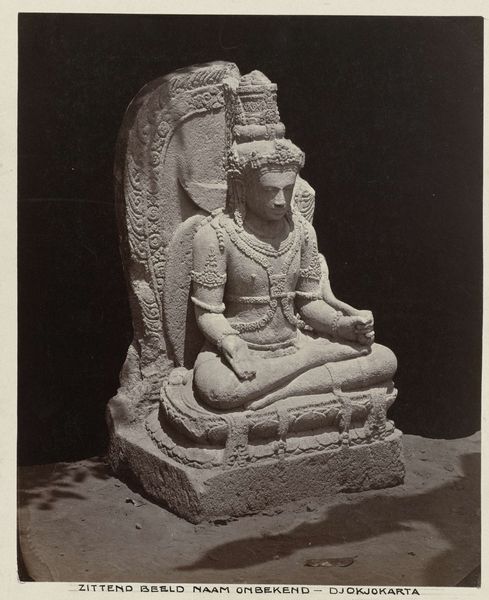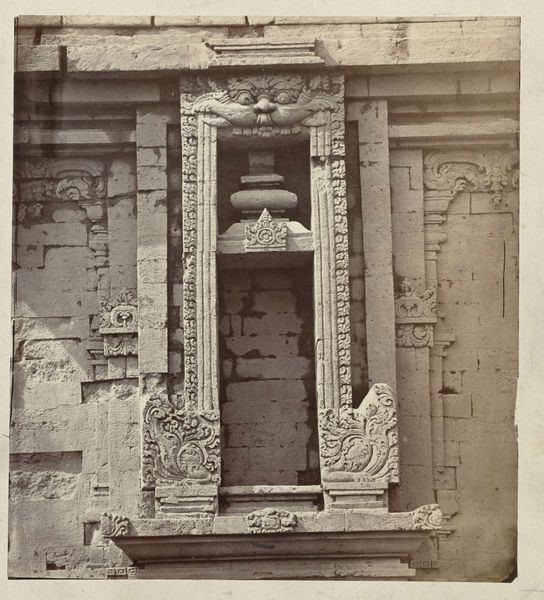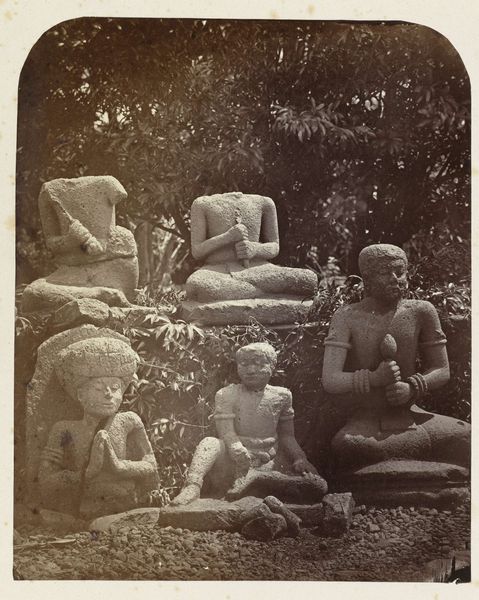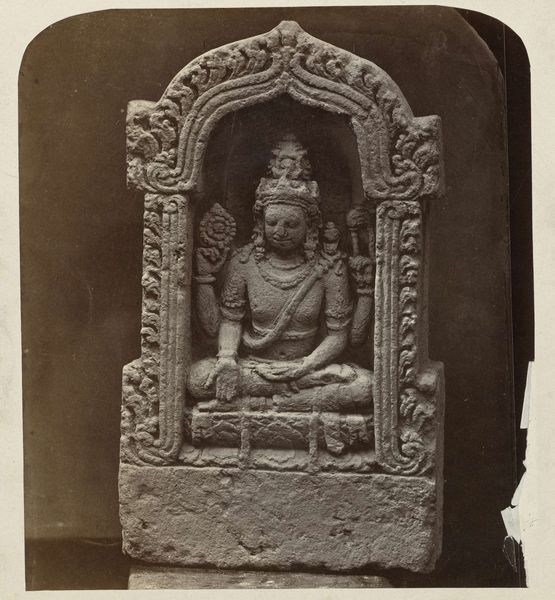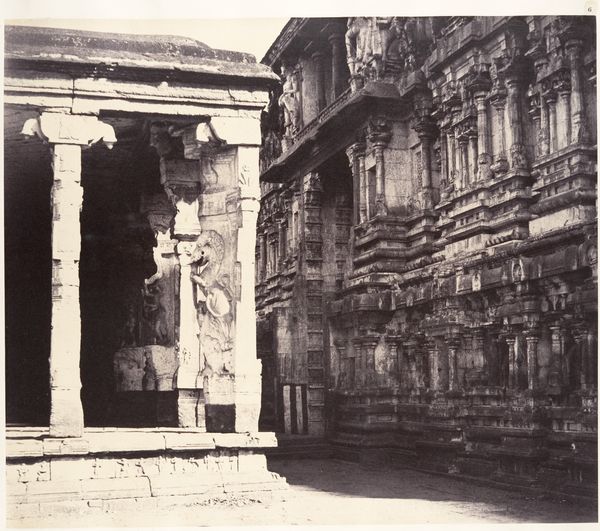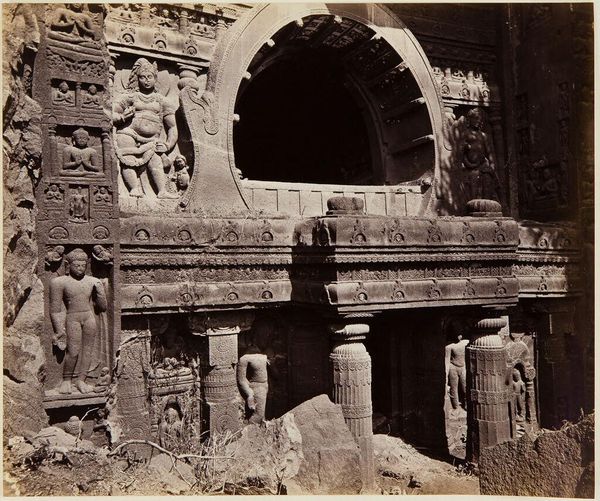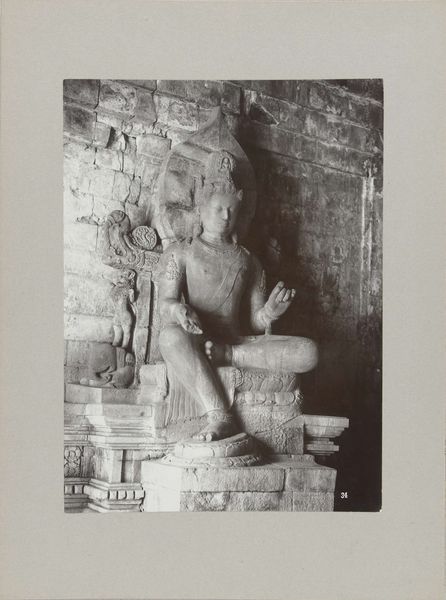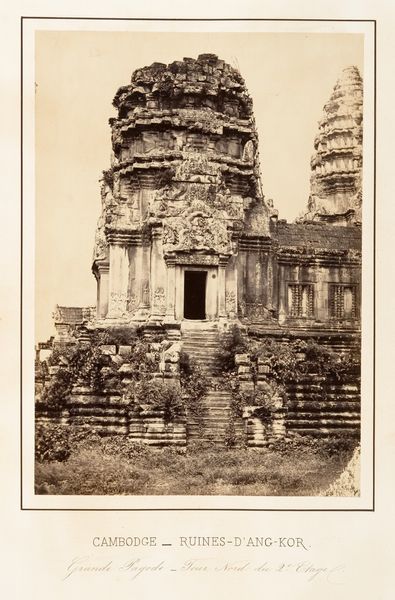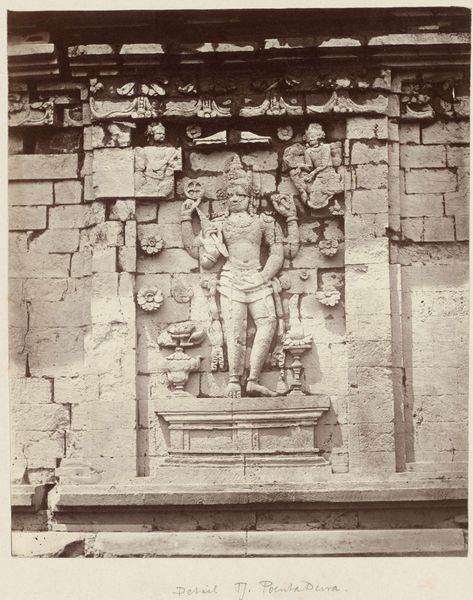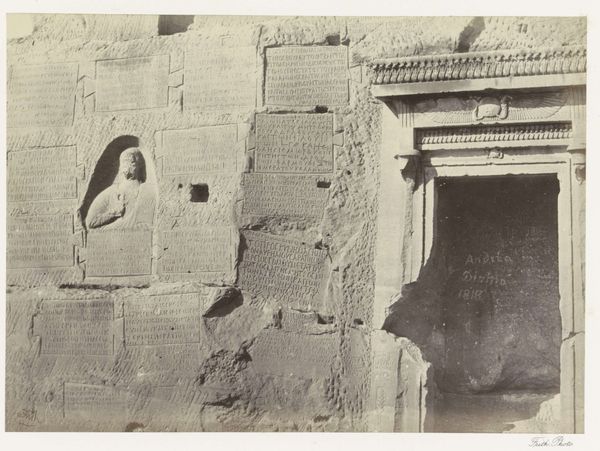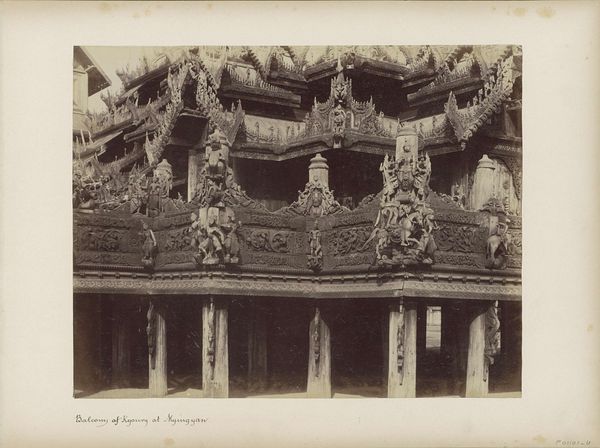
Vier nissen in de Borobudur met daarin Boeddha figuren in dhyanamudra. Possibly 1873 - 1879
0:00
0:00
photography, sculpture, gelatin-silver-print
#
asian-art
#
landscape
#
photography
#
geometric
#
sculpture
#
gelatin-silver-print
#
19th century
Dimensions: height 400 mm, width 300 mm
Copyright: Rijks Museum: Open Domain
Curator: This gelatin-silver print, possibly created between 1873 and 1879 by Isidore Kinsbergen, depicts four niches in Borobudur, each containing Buddha figures in dhyanamudra. Editor: There’s a profound stillness evoked here. The light is soft, and the geometric architecture surrounding each Buddha gives a sense of ordered serenity. The symmetry feels intentional, reinforcing the contemplative mood. Curator: Precisely. The act of photographing Borobudur during this period was as much a historical endeavor as an artistic one. Kinsbergen's work contributes to our understanding of the monument’s early reception and its place within the colonial gaze. Editor: It raises questions of representation, doesn’t it? The image itself becomes part of the history of how Asian art was—and perhaps still is—perceived through a Western lens. Consider how this image may have circulated, influencing perceptions of Eastern spiritual practices. Curator: Indeed. We must consider the colonial power dynamics inherent in these early photographic expeditions. However, the photograph also functions as an archive, documenting a specific moment in the site’s history before significant restoration efforts took place. How does it interact with issues of preservation and cultural heritage? Editor: From my perspective, it seems to invite reflection on agency, or the lack thereof. These figures are so perfectly posed, they're set within stone but also seem somehow exposed. Their serenity, potentially in response to colonial context, can be read as an assertion of resistance or quiet dissent. Curator: I appreciate your emphasis on that subtle but important element. Images such as this circulated widely. It inevitably played a role in constructing a specific visual vocabulary around Southeast Asian religious sites. And still it shows us what survives—a sacred location amidst all the different social forces. Editor: Absolutely, even in monochrome, we can glean a potent symbol, and that speaks to its continued relevance and legacy. A conversation about power, representation, and cultural identity—all emanating from this one serene image. Curator: Kinsbergen's photography gives insight into both past narratives and prompts our own critical interrogations about the politics of visuality and historical preservation. Editor: A dialogue initiated between us, by these figures, carried from history to now.
Comments
No comments
Be the first to comment and join the conversation on the ultimate creative platform.
